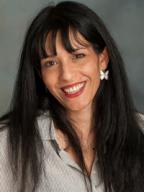CSUN Professors Test Behaviors in Current Fire Prevention and Safety Methods
From childhood to adulthood, the average person recalls the most common fire safety training they receive: Stop, Drop and Roll. However, it isn’t often that anyone looks at the effectiveness of such training, until the Alisa Ann Ruch Burn Foundation (AARBF) — a foundation dedicated to reducing burn injuries — contacted a pair of California State University, Northridge (CSUN) professors.

Ellie Kazemi
With the goal of decreasing the number of people affected by burn injuries across the United States, psychology professors Ellie Kazemi and Andrew Ainsworth collaborated with AARBF to secure a $401,912 Fire Prevention and Safety grant from the Federal Emergency Management Agency (FEMA) to evaluate current fire prevention and safety messaging.
“The Alisa Ann Ruch Burn Foundation is proud to have been awarded a Fire Prevention and Safety grant from FEMA and to partner with the California State University, Northridge,” said Jennifer Radics-Johnson, executive director of AARBF. “The work that we will be able to accomplish with this grant is groundbreaking, and will change the way we provide fire and burn safety [education] nationwide.”
Ainsworth and Kazemi are working with AARBF to analyze how fire prevention and safety education is currently provided, and how organizations evaluate the effectiveness of their educational programs.
“We want to assess if people respond in the manners in which they have been trained or educated [in fire safety],” Kazemi said. “There is the message: ‘Stop, Drop and Roll,’ and then there is engaging in these behaviors when your clothes are on fire. Our job is to help fire prevention and safety education experts across the nation look at how they are delivering their messages and to see if it’s effective.”

Andrew Ainsworth
The professors are using the two year grant in a series of phases. The first phase is to send out surveys and then conduct phone interviews with fire prevention and safety education experts to document the current methods being utilized. The next phase is to meet with experts in focus groups to discuss how educational practices and assessments can better target behavioral outcomes. The last phase will be to develop strategies and share the results with fire prevention and safety education experts across the country, such as AARBF, fire departments state fire marshal offices, burn centers and hospitals.
“A lot of places do not directly assess whether people are actually leaving with the information, or whether they actually understand how to do what they’ve learned,” said Ainsworth. “That’s why we were brought in as the behavioral scientists and evaluation team: to help participants develop methods to ensure behavioral change.”
After the evaluation is complete, AARBF, Ainsworth and Kazemi plan to create a set of standardized training and assessment procedures that can be adopted and implemented by fire
safety experts nationwide for use with participants of all age groups. The results are intended to measure behavioral change and save lives.
“This is an amazing opportunity because as behavioral scientists, we can look at this from a [behavioral] lens and add some insight,” said Ainsworth. “If [fire prevention and safety methods] can be improved, we can make a big difference.”

 experience
experience